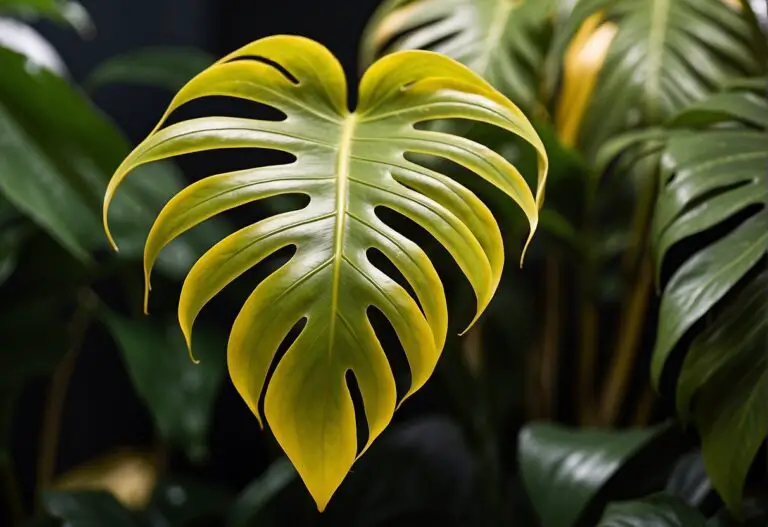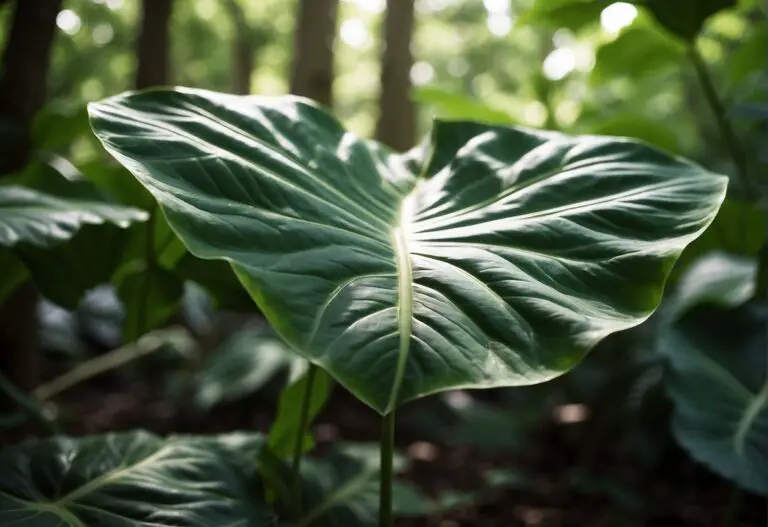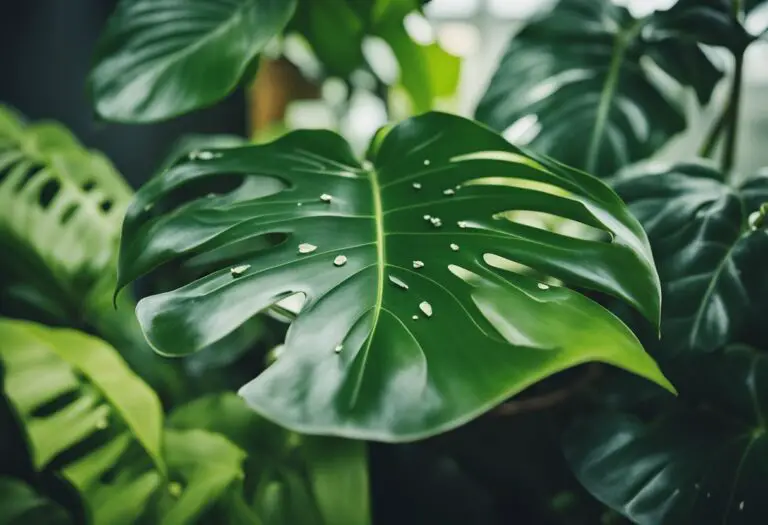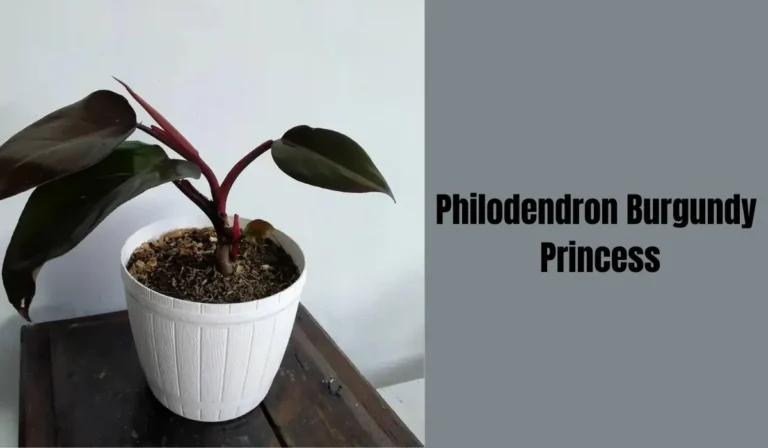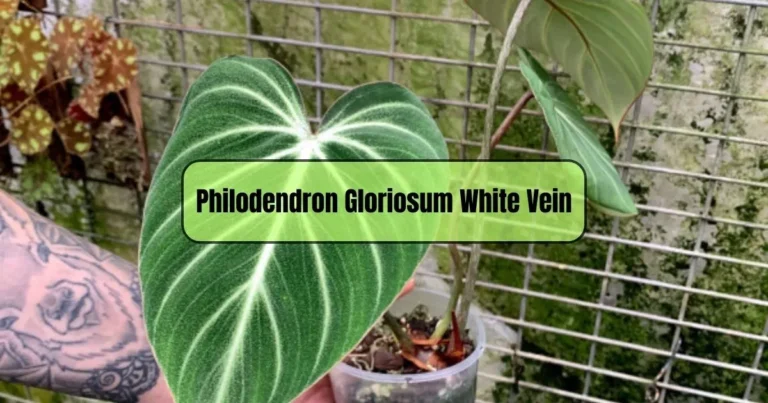Black Cherry Philodendron Care: Tips for a Thriving Indoor Plant
From Louise: I’m a gardening enthusiast, specializing in plant care and flower knowledge. I’m here to share my expertise and help with your gardening questions. Feel free to ask about Philodendron Plant care – I’ll respond within 24 hours!
The Philodendron Black Cherry is a distinctive houseplant that adds a touch of elegance to your indoor green collection. Its signature feature is the deep maroon or almost black color of its glossy leaves, which can grow up to a foot long.
This tropical plant is part of the Araceae family and thrives in the humidity similar to its native rainforests of Central and South America.

Your Philodendron Black Cherry will generally be a slow-grower, reaching up to 3 feet in height and 2 feet in width under optimal conditions.
It’s important to provide it with indirect sunlight and regular watering, aiming for slightly moist soil, but take care not to overwater.
For a personalized guide on water requirements, be sure to consider the plant’s pot size and your specific environment.
In terms of aesthetics, the Philodendron Black Cherry makes a bold statement with its dark foliage.
Cultivation and Care
To ensure your Philodendron Black Cherry thrives, it’s important to provide it with the right conditions and care.
This section will guide you through the specifics of cultivating and maintaining this beautiful houseplant.

Ideal Soil Conditions
Your Philodendron Black Cherry prefers a soil mix that is rich in organic matter and has excellent drainage.
Use a peat-based potting mix or create your own by mixing perlite, peat, and pine bark in equal parts.
Light Requirements
Place your plant in a spot that gets bright, indirect light.
Direct sunlight can lead to leaf burn, while too little light may cause the leaves to lose their vibrant color.
Watering Schedule
Water your Philodendron Black Cherry regularly to keep the soil consistently moist, but be careful not to overwater.
The top inch of soil should be allowed to dry out before you water again to prevent rot.
Temperature and Humidity
This plant prefers a warm climate with temperatures between 65-78°F (18-26°C).
Aim for higher humidity levels, ideally around 60%, to mimic its tropical environment.
Fertilization Guide
Feed your Black Cherry Philodendron every month during the growing season with a balanced, water-soluble fertilizer.
During winter, reduce feeding to every six to eight weeks.
Pruning and Maintenance
Prune any yellow or dead leaves to keep your plant healthy and encourage new growth.
Regularly check for pests and dust the leaves to maintain its glossy appearance.
Propagating Black Cherry Philodendron

Propagating your Philodendron Black Cherry can be a rewarding experience, ensuring new growth from a beloved houseplant.
You’ll learn about choosing the right stem cuttings, methods to encourage root development, and how to transition the new plants into their permanent homes.
Cutting Selection and Preparation
When selecting a stem for propagation, choose a healthy, 6-inch piece with at least two leaves.
Remove the lower leaves, leaving only a couple near the tip to ensure the plant focuses energy on root development. The cut should be made just above a leaf node at a 45-degree angle to increase the area for rooting.
Rooting Techniques
For successful rooting, you can place the prepared cutting in water or moist potting mix.
If you opt for water, replace it every few days to keep it fresh, and wait for roots that are about an inch long before transplanting.
When using soil, keep it damp and cover your cutting with a plastic bag to maintain humidity.
Transplanting Young Plants
Once your cutting has established roots, transfer it to a permanent pot with well-draining soil enriched with organic matter.
Be gentle during the transplanting process to avoid damaging the delicate new roots. Ensure the pot has drainage holes to prevent water from pooling and causing root rot.
Common Issues
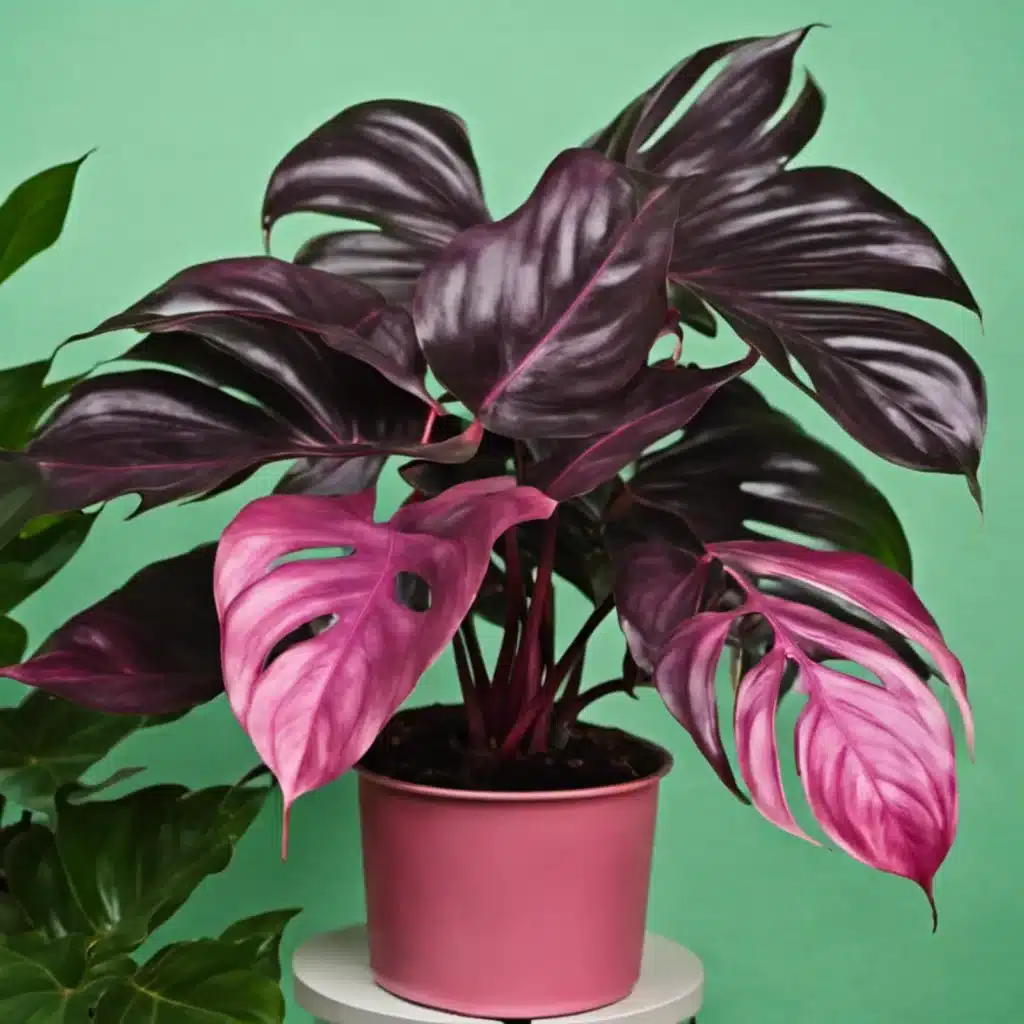
When you’re nurturing a Black Cherry Philodendron, it’s important to be vigilant about potential problems.
Keep an eye out for pests, diseases, and nutrient deficiencies that can dampen the health and beauty of your plant.
Pest Problems
Your Black Cherry Philodendron may attract pests such as mealybugs, spider mites, and aphids.
These pests can be identified by small discolored spots or webs on the leaves. To combat them, wipe down the leaves with a solution of soapy water or use appropriate insecticidal sprays.
Diseases and Treatments
Watch for leaf spot disease, a common ailment indicated by brown or black spots on the foliage.
Ensure good air circulation and avoid wetting the leaves when watering to prevent this. If your plant contracts a bacterial disease, remove affected leaves and apply suitable fungicides as a treatment.
Nutrient Deficiencies
Nutrient deficiencies often manifest as discolored or misshapen leaves.
If your plant is lacking, it may need a balanced, water-soluble fertilizer. Make sure to follow the instructions carefully to avoid over-fertilization, which can also lead to problems.
Design and Display
When creating a visual statement with your Black Cherry Philodendron, choosing the right display options will accentuate its dark, elegant leaves.
Your choices can complement the plant’s stunning maroon to almost black foliage and encourage its growth.
Potting and Repotting
Select a pot that contrasts well with the Philodendron Black Cherry’s dark leaves; a white or light-colored pot makes the deep hues pop.
You should repot your philodendron every couple of years to allow for growth and refresh the soil, which will help maintain its vibrant appearance.
Landscaping with Philodendrons
Incorporate Philodendron Black Cherry into your outdoor spaces by using it as a statement plant in shaded areas.
Since they thrive in indirect light, positioning them under a canopy of trees allows them to blend naturally with the landscape while adding a splash of deep color.
Indoor Arrangement Ideas
Create an indoor tropical oasis by pairing your Black Cherry Philodendron with plants that have lighter green foliage; this contrast will make its dark leaves stand out.
For a cohesive look, cluster plants of varying heights around your philodendron to draw the eye upwards and make any room feel lush.
Fun Facts and Trivia
- Botanical Name: Your Black Cherry Philodendron’s scientific name is Philodendron Erubescens ‘Black Cherry’.
- Family Matters: Your plant is a proud member of the Araceae family, sharing lineage with other captivating houseplants.
Philodendrons are admired for their air-purifying qualities, which means your Black Cherry can help keep your indoor air clean!
This plant’s close relative is known for fascinating leaves that can change color; your Black Cherry Philodendron starts with deep burgundy leaves that become darker, almost black, as they mature.
Despite their tropical origins, Black Cherry Philodendrons are perfectly happy in your home.
They relish the same temperatures you do, preferring days around 65-80°F (18-27°C) and nights not below 55°F (13°C).
Originating from lush rainforests, they’ve adapted to manage well in lower light conditions, though bright, indirect light ensures the most stunning leaf coloration.
Frequently Asked Questions
This section addresses some of the most common inquiries about the Black Cherry Philodendron, covering care, purchase options, variety, propagation techniques, cost, and the distinction between similar species.
How do you take care of a Black Cherry Philodendron?
To maintain a healthy Black Cherry Philodendron, provide it with bright, indirect light and water when the top inch of soil is dry.
It’s important to avoid direct sunlight to prevent leaf burn and to refrain from overwatering to prevent root rot.
Where can I find a Black Cherry Philodendron for sale?
You can find Black Cherry Philodendrons for sale at specialty nurseries or through online houseplant shops.
Be sure to buy from reputable sellers to ensure you receive a healthy specimen.
What are some popular varieties of the Black Cherry Philodendron?
Popular varieties include the Black Cherry Philodendron itself, known for its deep red-purple leaves, and the Pink Princess, which is coveted for its pink and green variegated foliage.
Both have unique appearances treasured by collectors.
Can you explain the process for propagating a Black Cherry Philodendron?
To propagate your Black Cherry Philodendron, cut a stem just below a leaf node, and plant it in moist soil or water.
It will develop roots over a few weeks, after which you can plant it in soil. Keep the medium consistently moist to encourage growth.
How much does a typical Black Cherry Philodendron cost?
The cost of a Black Cherry Philodendron can vary widely based on size and maturity, but typically they range from $30 to $100+.
It’s always worth checking several sources to compare prices and plant quality.
What distinguishes the Pink Princess Philodendron from the Marble Galaxy Philodendron?
The Pink Princess Philodendron is characterized by its pink and green variegated leaves. Meanwhile, the Marble Galaxy Philodendron showcases a mix of white and green variegation.
Each variety has a distinct color pattern pleasing to the eye and highly sought after by enthusiasts.
This tropical aroid originates from Colombia and showcases variegated leaves in green, white, and pink hues. Its name derives from the deep burgundy leaves of the Philodendron Black Cherry and the pink spots on the Philodendron Pink Princess. This unique plant is sure to spark conversations.

